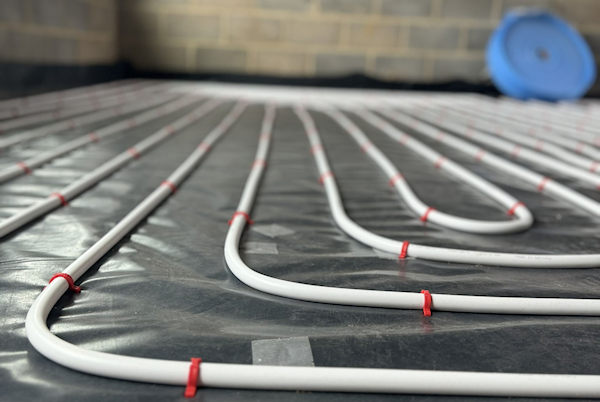
Change to Part L of the Building Regs
It is expected that changes to both Part L and F of the building regulations will be released in October 2021 and come into effect from April 2022. You may be aware of this, but what effects does this have on how you do a system this time around? The primary change is further requirements for better insulation to reduce heat losses in the building, which is to be expected. However, the most challenging difference is the requirement to design a system for a maximum water temperature of 50°C.
What is the difference between heat loss and output?
When you scope the size of most heat emitters, the size must be based on the difference between the mean water temperature (average of flow and return) and the ideal room temperature using guides from the emitter supplier. This sizing gives the “output” (in kW/BTU’s) of the emitter. However, this output is not what the building loses.
When we refer to heat loss, this is based on the building structure and the number of air changes. To calculate how much energy would be needed to heat the building when it is -3° outside to 21°C indoor, you use parameters of an outside temperature (normally -3°C) and an indoor temperature (usually 21°C). Past this, then your heat loss will be higher.
Why is the change in water temperature so significant?
When heat emitter manufacturers make the heat emission tables, they are based on a specific flow water temperature. Proposed changes to Part L mean that the temperature will be 20-30°C cooler than previously used. The lower the water temperature, the lower your output will be for the same radiator. So, to meet the heat losses (which, luckily, because of better insulation, heat losses are getting smaller), you will have to look at having larger radiators and maybe even pipework.
Is there a better way?
Yes, UFH has been around a long time and has for many years used temperatures cooler than 50°C. What’s more, by designing your system with some care, you can get much cooler than this! We at Multipipe are designing systems down to as low as 30°C! These lower temperatures open up renewables but at the very least offer far high efficiencies on boilers. See our range of UFH solutions here.
- Summary of main points:
- Heat losses are significant and should always be done (don’t rely on max outputs!)
- The lower to water temperature in the system, the bigger your emitter has to be.
- The change in regs is not here yet but is more to future proof for renewable in the future.
- UFH is better suited to lower water temperatures, but radiators can be easily sized for low temperatures.





